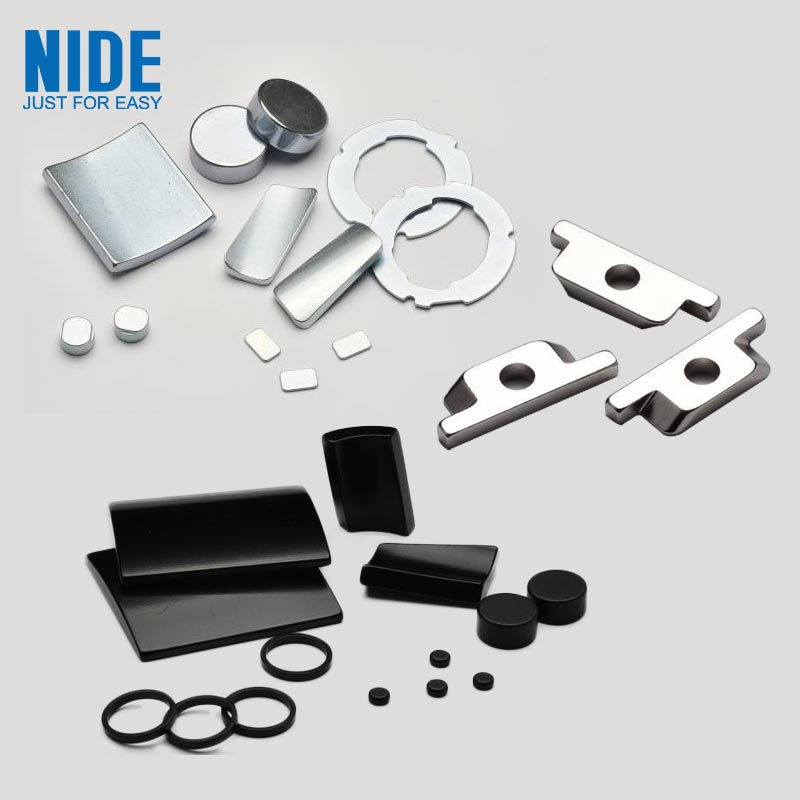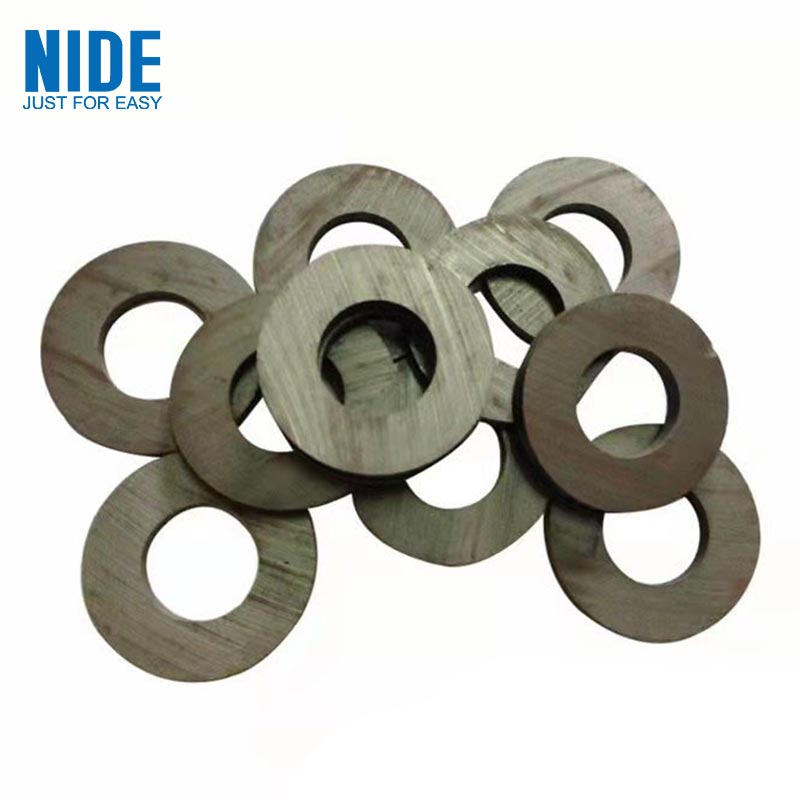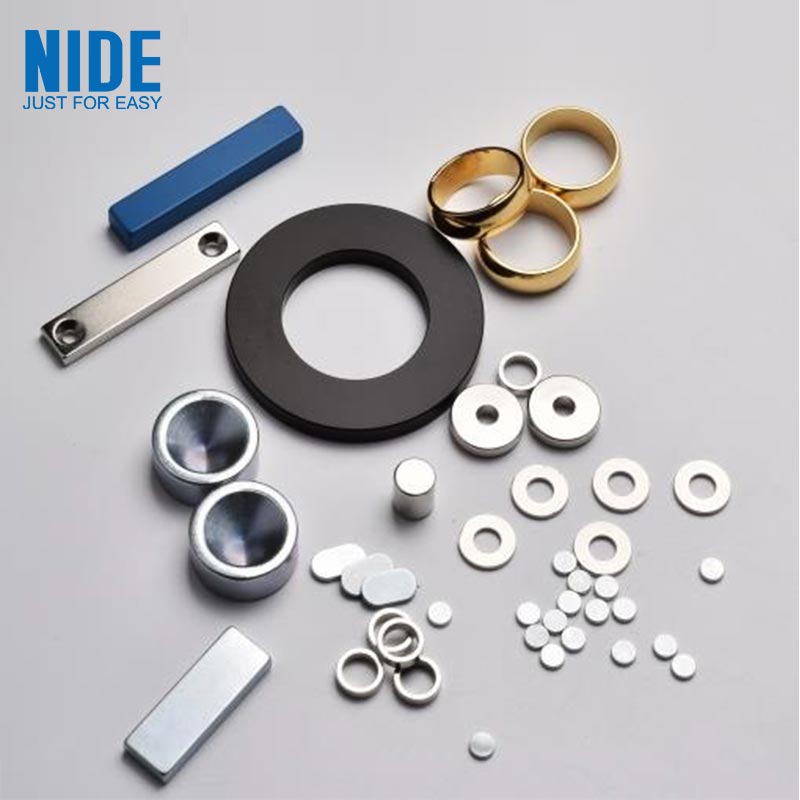Why is the Magnetic Materials Industry’ Growth a Key Trend?
2025-10-17
Table of Contents
-
What is the current news question around “Magnet” — and why it matters
-
What is a Ferrite Magnet — principle, properties and use cases
-
What is a Sintered NdFeB Magnet — technology, performance and comparative table
-
How our Magnet product shines — parameters, advantages, FAQs, next steps
What is the current news question around “Magnet”
Below, that same philosophy guides our product messaging — positioning our Magnet solution as an answer to the real questions your audience is searching for.
What is a Ferrite Magnet — principle, properties and use cases
What is it and how is it made?
A Ferrite Magnet (also termed “ceramic magnet” or “hard ferrite”) is a magnet made from a ceramic compound of iron oxide (Fe₂O₃) combined with metallic oxide (commonly barium or strontium).
The process broadly involves:
-
Mixing iron oxide + barium/strontium carbonate powder
-
Pressing/molding into shape
-
Sintering at high temperature in a controlled atmosphere
-
Magnetizing in an external magnetic field
Because ferrite is electrically insulating, it has low eddy-current losses.
Key physical and magnetic properties
Here is a comparison of ferrite magnet typical properties:
| Parameter | Typical Value | Notes / implications |
|---|---|---|
| Remanence (B_r) | ~0.2 – 0.5 Tesla | Lower magnetic flux compared to rare-earth magnets |
| Coercivity (H_c) | ~100 to few hundred kA/m | Good resistance to demagnetization in many conditions |
| Maximum energy product (BH_max) | ~1 – 5 MGOe (≈ 8 – 40 kJ/m³) | Relatively low compared to rare-earth types |
| Density | ~4.8 – 5.2 g/cm³ | Lightweight compared to NdFeB (≈ 7.5 g/cm³) |
| Temperature range | –40 °C up to ~250 °C | Better thermal stability, less sensitivity to temperature than NdFeB |
| Corrosion resistance | High (intrinsically) | No or minimal coating needed, good for humid or outdoor environments |
Use cases & advantages / disadvantages
Advantages:
-
Cost-effective: raw materials are abundant and inexpensive
-
Excellent corrosion resistance and environmental stability
-
Good temperature tolerance
-
Electrical insulation — minimal eddy current losses
Limitations:
-
Lower magnetic strength (flux density)
-
Bulkier or heavier for equivalent magnetic performance
-
Less suitable for miniaturized high-power applications
Typical applications include:
-
Loudspeakers, microphones
-
Motors (low- to mid-grade)
-
Magnetic separation (where high cost-per-unit isn’t acceptable)
-
Sensors, magnetic assemblies in appliances
In summary, Ferrite magnets are reliable, affordable, and robust — ideal when extreme magnetic strength is not the priority, or when environmental resilience is key.
What is a Sintered NdFeB Magnet — technology, performance and comparative table
What is Sintered NdFeB, and how is it produced?
A sintered NdFeB magnet is a high-performance rare-earth permanent magnet made via powder metallurgy.
The generalized manufacturing steps:
-
Alloy melt and cast
-
Pulverization / hydrogen-decrepitation / fine grinding to micro powder
-
Alignment and pressing under magnetic field
-
Sintering (densification) in vacuum or inert gas
-
Heat treatment / annealing to optimize microstructure
-
Machining (cutting, grinding, shaping of poles)
-
Surface treatment/coating (Ni, Ni–Cu–Ni, epoxy, etc.)
Because sintered NdFeB is brittle, the bulk forms are often processed into final geometries post-sintering.
Performance and limits
Sintered NdFeB magnets are among the strongest permanent magnets available. Some typical performance metrics:
-
Maximum energy product (BH_max): 33 to 51 MGOe (≈ 265 to 408 kJ/m³)
-
Remanence (B_r): ~1.0 – 1.5 T
-
Coercivity (H_cj): up to ~2000 kA/m (varies by grade)
-
Density: ~7.3 – 7.7 g/cm³
-
Operating temperature: Typical grades up to ~80–200 °C; special grades can sustain higher but with performance penalty
Because high iron content is susceptible to oxidation, surface coatings or protective layers are essential (e.g. nickel, NiCuNi, epoxy) to prevent corrosion and degradation.
Comparison: Sintered NdFeB vs Ferrite vs Bonded NdFeB
To highlight where sintered NdFeB fits, here is a comparative table of three magnet types:
| Parameter / Type | Ferrite Magnet | Bonded NdFeB Magnet | Sintered NdFeB Magnet |
|---|---|---|---|
| Composition | Iron oxide + Ba/Sr oxides | NdFeB powder + binder | Fully dense NdFeB alloy |
| (BH)_max | ~1 – 5 MGOe | < 10 MGOe (typical) | 33 – 51 MGOe |
| Density | ~5 g/cm³ | ~6 g/cm³ (with binder) | ~7.3 – 7.7 g/cm³ |
| Mechanical properties | Relatively brittle but stable | Better mechanical flexibility (less brittle) | Very brittle — high machining loss |
| Corrosion resistance | Good (inherent) | Good (resin binder helps) | Needs protective coating |
| Temperature stability | –40 to ~250 °C | Moderate | Varies by grade; often ~80–200 °C |
| Cost | Lowest | Mid | Highest (energy, process, machining) |
| Shape flexibility | Needs sintering molds | Good for complex shapes (injection, molding) | Mostly block → machined shapes |
From the comparisons, sintered NdFeB is chosen when high magnetic flux in compact space is essential — e.g. in motors, actuators, sensors, medical devices. Ferrite is best when cost, stability, and environmental resilience matter most. Bonded NdFeB (though not our focus here) is the middle ground: better shape flexibility, lower cost, but weaker magnetic output.
How our Magnet product shines — parameters, advantages, FAQs, next steps
How do we design and deliver a premium Magnet product?
We engineer our magnet solutions to answer precisely the “how / why / what” questions that prospective users ask. Below is a structured presentation of our Magnet product parameters, advantages, and typical application scenarios.
Key product parameters (spec sheet)
Here is a representative parameter sheet for one of our high-performance Magnet models:
| Parameter | Value | Notes / Typical Grade |
|---|---|---|
| Material | Sintered NdFeB | High-performance rare earth magnet |
| Grade | N52 / N35 / N42 (customizable) | Buyer may specify per application |
| Br (Remanence) | 1.32 T | Depends on grade |
| BH_max | 52 MGOe | High-energy grade |
| H_cj (coercivity) | 1700 kA/m | For good demag resistance |
| Density | ~7.5 g/cm³ | Nearly theoretical density |
| Operating temperature | Up to 120 °C (standard) | Higher-temperature variants available |
| Surface coating | Ni / Ni–Cu–Ni / Epoxy | To prevent corrosion |
| Dimension tolerance | ±0.02 mm | High precision machining |
| Shapes available | Blocks, rings, discs, custom poles | Tailored per customer drawings |
| Magnetization mode | Axial, radial, multipole | According to design requirements |
These parameter options ensure we can tailor to many demanding sectors: electric motors, robotics, wind turbines, magnetic bearings, sensors, etc.
Why choose our Magnet product?
-
Compact magnetic force: Because of high (BH)_max, we deliver strong magnetic performance in small volumes.
-
High precision & tight tolerances: Our machining, grinding, and inspection ensure dimensional accuracy down to microns.
-
Custom magnetization modes: We support axial, radial, multipole or complex field profiles.
-
Reliable coatings for corrosion protection: Ni, Ni–Cu–Ni, and epoxy layers as needed for your application environment.
-
Thermal variant grades: Standard and premium grades for elevated temperatures.
-
Quality control and traceability: Every batch is tested (flux, coercivity, dimensional) with full QC reports.
-
Support & customization: We consult on magnetic circuits, optimization, and assist in selection.
FAQs: Common questions about our Magnet products
Q1: What is the maximum operating temperature for your magnets?
A1: Our standard grades operate reliably up to 120 °C. For higher-temperature applications, we offer specialized grades rated up to 150 °C or more, with slight trade-offs in magnetic strength.
Q2: How do you prevent corrosion on NdFeB magnets?
A2: We apply protective coatings such as Ni, Ni–Cu–Ni, or epoxy. These layers act as barriers against oxidation, particularly in humid or aggressive environments.
Q3: Can you supply custom shapes and magnetization patterns?
A3: Yes. We customize geometries (blocks, rings, poles) and support axial, radial, and multipole magnetization per customer design and application needs.
Putting it all together: How, Why, What narrative
-
How do you benefit from using our magnet solution? — You get compact, high-force magnetic performance, with custom geometry and excellent precision, enabling lighter and more efficient designs.
-
Why choose this over standard ferrite or off-the-shelf magnets? — Because when performance, miniaturization, or efficient magnetic design matters, our sintered NdFeB option outperforms: more flux, better density, and tailored magnetization profiles.
-
What exactly are you getting? — You receive a magnet engineered to tight tolerance, tested thoroughly, with protective coatings and design support — not just a “magnet off the shelf.”
Adding to that narrative, we also integrate content on Ferrite magnets to help customers understand when ferrite is sufficient versus when the extra performance of NdFeB is needed.
Next steps & contact
We work under the brand NIDE, delivering high-quality magnet solutions engineered to your specifications. If you'd like to explore custom magnet designs, request sample testing, or get a detailed quotation, please contact us — our technical team will respond promptly and tailor the best solution to your application.




